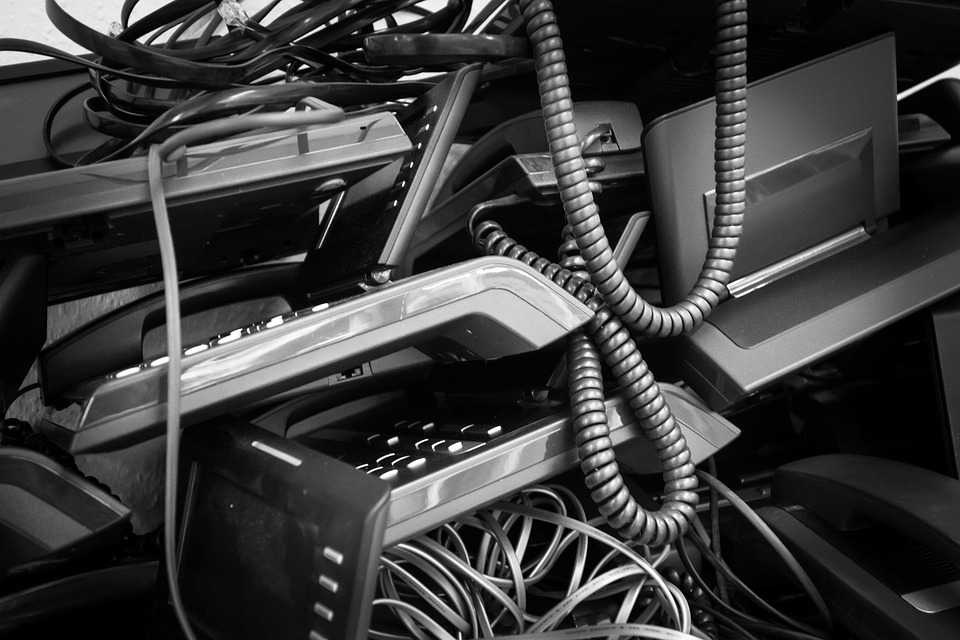
Electronic waste (or e-waste) is becoming an increasingly severe problem around the world. Globally, 53.6 million tons of e-waste were produced in the year 2019. This figure is up 21 percent in five years. Only 17.4 percent of e-waste is properly recycled, and the rest goes into landfills or incinerators, where it could contaminate the environment and impact human health.
Albert Boufarah of SAMR Inc, an e-waste recycler based in Lakewood, NJ, explains the problem of e-waste and how responsible companies can help to reduce their output and preserve the environment.
Why is e-waste such a serious problem?
Since most e-waste around the world is not recycled or disposed of properly, this increases the likelihood that its components will be released into the soil & water streams that all forms of life depend on for nourishment. These chemicals and heavy metals can cause cancer, diminished IQ, and neurological damage.
E-waste not only contains contaminants like arsenic, cadmium, mercury, and lead, it also contains valuable and recyclable materials like gold, silver, copper, plastics, and glass. According to the United Nations, $10 billion in precious metals found in e-waste is improperly dumped each year.
E-waste in the United States
The United States contributes significantly to the global problem of e-waste by producing 6.92 million tons of e-waste. Only 15 percent of the material was properly recycled. Raw materials in e-waste totaled $7.49 billion.
How Can My Company Help With the E-Waste Crisis?
The most important thing that responsible U.S. companies can do is make sure that all of their e-waste is recycled and disposed of properly. Frequently, companies discard large amounts of electronic equipment when they perform system upgrades. This means that they have bulk amounts of e-waste that must be dealt with.
Albert Boufarah cautions that large workplaces like hospitals, financial institutions, and schools must be especially careful to properly recycle their e-waste since they often have large quantities of equipment and are in need of secure data destruction because their devices carry sensitive employee & customer information. Recyclers like SAMR Inc can help to reduce these businesses’ and institutions’ environmental impact significantly.
The E-Waste Recycling Process
Following is a breakdown of the steps that companies should follow when deciding to upgrade their computers and the process of recycling.
Step 1: When to Upgrade
The first step in the e-waste recycling process is deciding when to replace old computers and electronic equipment. If your equipment is running slowly, experiencing problems, or is unable to run the latest software and operating system, it may be time to upgrade. If your company keeps your computer equipment up to date, it will make your workforce happier and more productive.
Step 2: Choosing a Recycler
The next step is choosing an electronics & computer recycling firm. Choose a company with easy dropoff and pickup procedures for maximum convenience. These companies can work with your firm to collect machines by dropoff or pickup, whichever is more convenient for you.
Choosing an experienced & properly certified recycler is important. SAMR Inc has been in operation for over 20 years, and are capable of providing their expertise to help you with your e-waste problems every day.
Companies should also choose full-service recyclers that can deal with electronics and computer recycling with ease. Few companies can safely and legally collect and disassemble computers as well as recycling them at maximum levels.
Step 3: Data Removal
One of the most vital steps of quality electronics recyclers is completely destroying any proprietary data located on hard drives. Simply erasing a hard drive is not enough to prevent its contents from being accessed at some point by those who may wish to sell or misuse them. A credible e-waste & laptop recycling company will ensure that the hard drives are completely wiped to Department of Defense (DOD) standards and shredded to ensure that information cannot be accessed at any point in the future.
Step 4: Metals and Hazardous Materials Removal
Metals used in the computer manufacturing process are recovered in this step. These materials are repurposed to be used again. Hazardous materials are also removed, preventing future recipients of the materials from potentially becoming ill and preventing the transfer of these dangerous chemicals into the groundwater, air, and soil.
Step 5: Breakdown of Reusable Materials
Finally, the reusable materials in computers are broken down. Plastics and glass are two of the most common materials that can be used to manufacture new electronic devices.
Step 6: Safely Discarding Trash Created in the Recycling Process
The non-reusable, non-recyclable trash created in the electronics recycling process must be properly disposed of. Experienced electronics recyclers like SAMR Inc can do this safely without impacting the environment.
Creating a Brighter Environmental Future Through Electronics Recycling
Large employers like schools, hospitals, and other institutions have a responsibility to protect the environment. They must participate in robust electronics recycling programs like those offered by Albert Boufarah & SAMR Inc. Taking care of e-waste helps to solve a national and global problem while doing the right thing for our planet.
